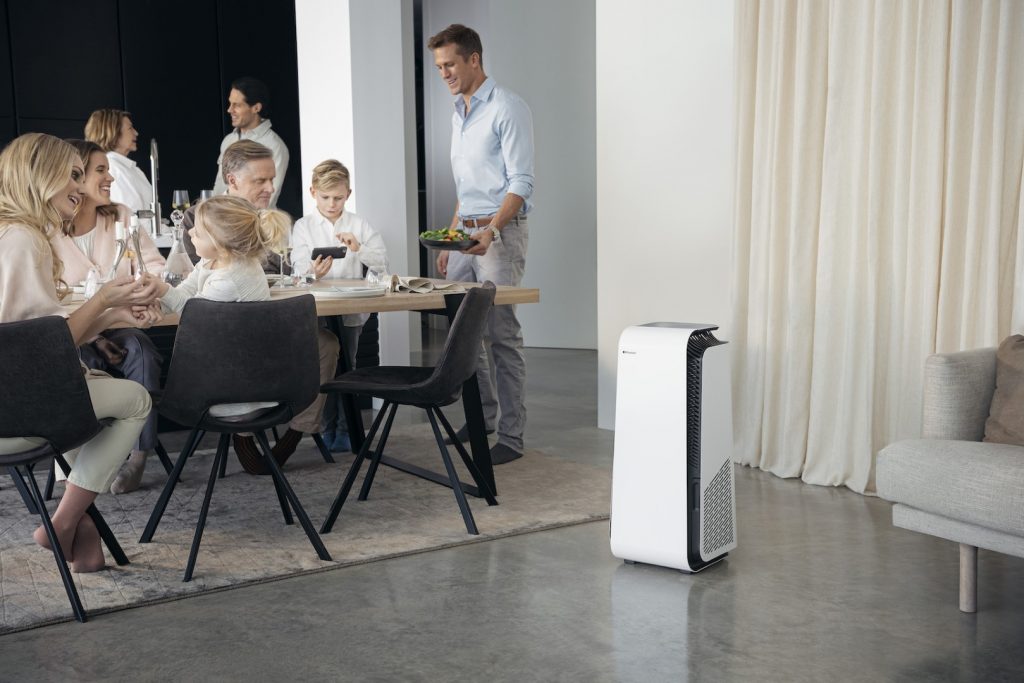
It’s a truth universally accepted parents would do everything in their power to protect their children from danger. Ultimately, however, we can only protect our children from harm if we recognise what the threat is or where it might come from. We cannot protect our kids against a danger we cannot see, that type of risk presents a completely different type of challenge.
One such threat that is not given the attention it deserves is indoor air pollution. Considering that children spend most of their time indoors, especially in today’s changed environment, understanding the consequences and impact of bad indoor air quality is crucial to ensuring the well-being of not just kids but every occupant at home.
Research by the American Heart Association indicates that even short-term exposure of less than 30 days is enough for coarse pollutive particles to significantly raise systolic blood pressure in children. (1). The research evaluated 14 studies that explored the link between children and pollution. Indoors offers no safe haven as the concentration of pollutants can be a staggering five times more than outdoors, according to research by the United States Environmental Protection Agency (EPA). (2).
Indoor pollution is caused by a combination of common household activities such as cooking and cleaning, and even by physical objects such as synthetic textiles and plastic, and external emissions that find their way through windows and exhausts to pollute indoors. Other sources which many may not be aware of include particles released from perfume, hair spray, smoking or burning candles. In fact, a recent study in the region reported that ventilation systems of buildings were not effective in removing pollutants from cooking, smoking, furnishings, and other sources. (3).
Indoor air pollution has been linked to a number of health conditions, from asthma and allergies to cardiovascular disease (2) (4). Clean indoor air quality is especially crucial for children; compared to adults, they breathe higher volumes of air in proportion to their size, making their lungs more sensitive. Even while developing in the womb, air quality can have a detrimental effect on their respiratory system.

While making positive behavioural shifts such as vacuuming regularly, avoiding the use of chemicals and candles, and opening windows for ventilation are recommended, there is one proven solution that can make an immediate and real difference: using an air purifier. A high-quality air purifier can remove more than 99 per cent of toxic indoor pollutants from the air that could otherwise harm your child.
At Blueair, our continuous quest is to enhance the efficiency of air purifiers, which have led us to the R&D of the HealthProtect™ air purifier that provides protection against viruses and bacteria, even when it is on standby. Thought not proven to kill SARS-CoV-2 or reduce or prevent COVID-19 transmission, independent third-party laboratory tests have found that it removes 99.99 per cent of live airborne SARS-CoV-2.
In fact, a YouGov study reported that over two-thirds of parents in the US, China, India and South Korea believe an air purifier is beneficial for raising a healthy child.
But why are quality air purifiers the go-to solution, especially to safeguard our children’s health? Kids spend nearly two-thirds of their time playing or sleeping – which means it is crucial that we give them a healthy environment at all times. It is estimated that there are up to 300 different chemicals in a child’s room, in addition to the threats from allergens, pollen, pet dander, dust, mould, viruses and bacteria. On the contrary, a high-quality air purifier may provide children with faster-acting relief for allergy and asthma symptoms than many natural home remedies.
With over 90 per cent of the children under the age of 15 years breathing in toxic air every day, according to a World Health Organization report, it is important that we do our part to ensure our children have clean, healthy air while they grow, play and learn, and take decisive action against this ‘hidden enemy.’ (5).
Here are 10 tips:
- Open the windows – your indoor air is on average five times more polluted than the outside air and it is important to allow good air circulation
- Avoid use of scented candles and incense
- Vacuum frequently, and regularly wash beddings and other textiles
- Reduce or remove carpets, which trap unhealthy particles such as dirt, fungi and dust mites.
- Avoid use of unnecessary chemicals – select natural cleaning products instead
- Cut down the use of perfume and hair spray, and do not let spray particles stray on to your children
- Wash new clothes before use to reduce the amount of chemicals that enter the air
- Avoid buying toys containing plastics, as these can release harmful microplastics
- Invest in plants: according to NASA, English ivy and Peace lily best eliminate household pollutants
- Put an air purifier in the rooms where you spend most of your time












